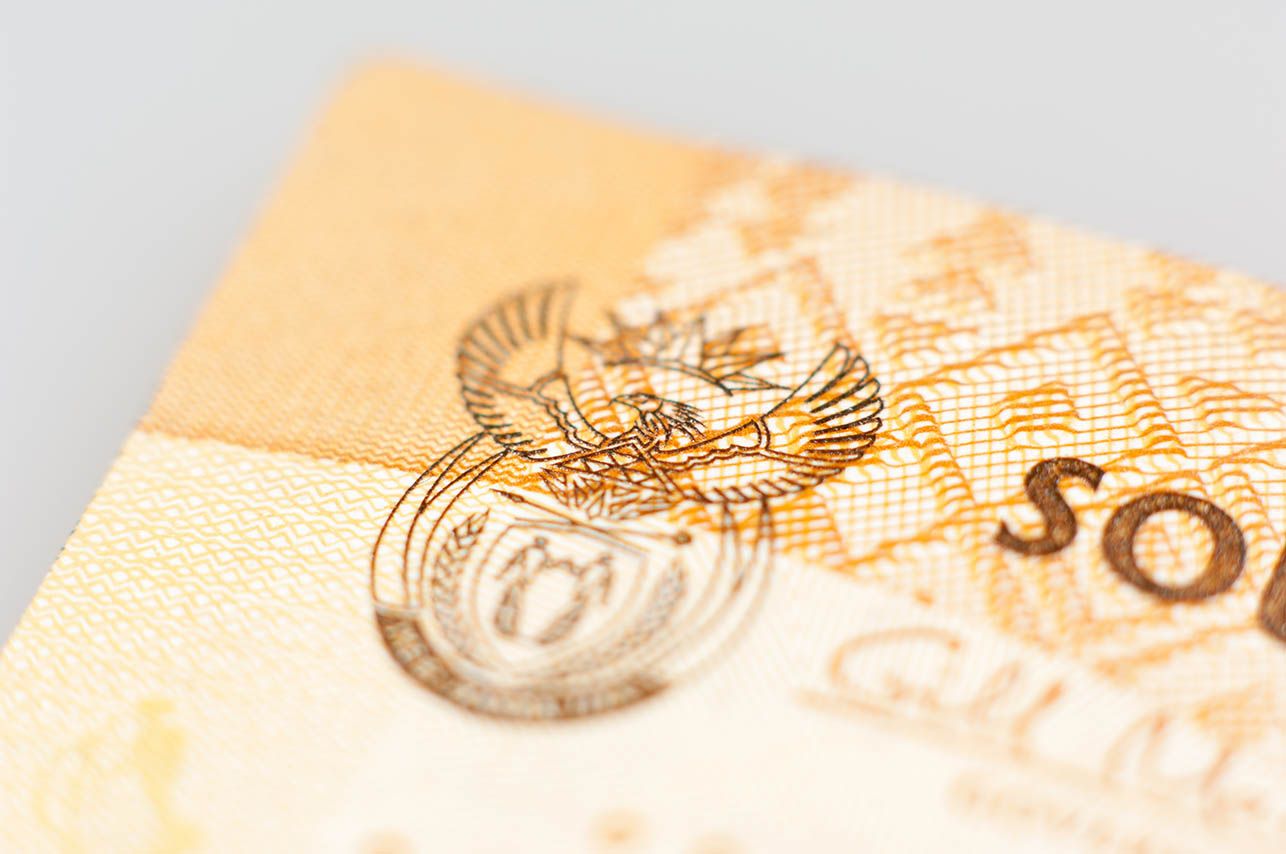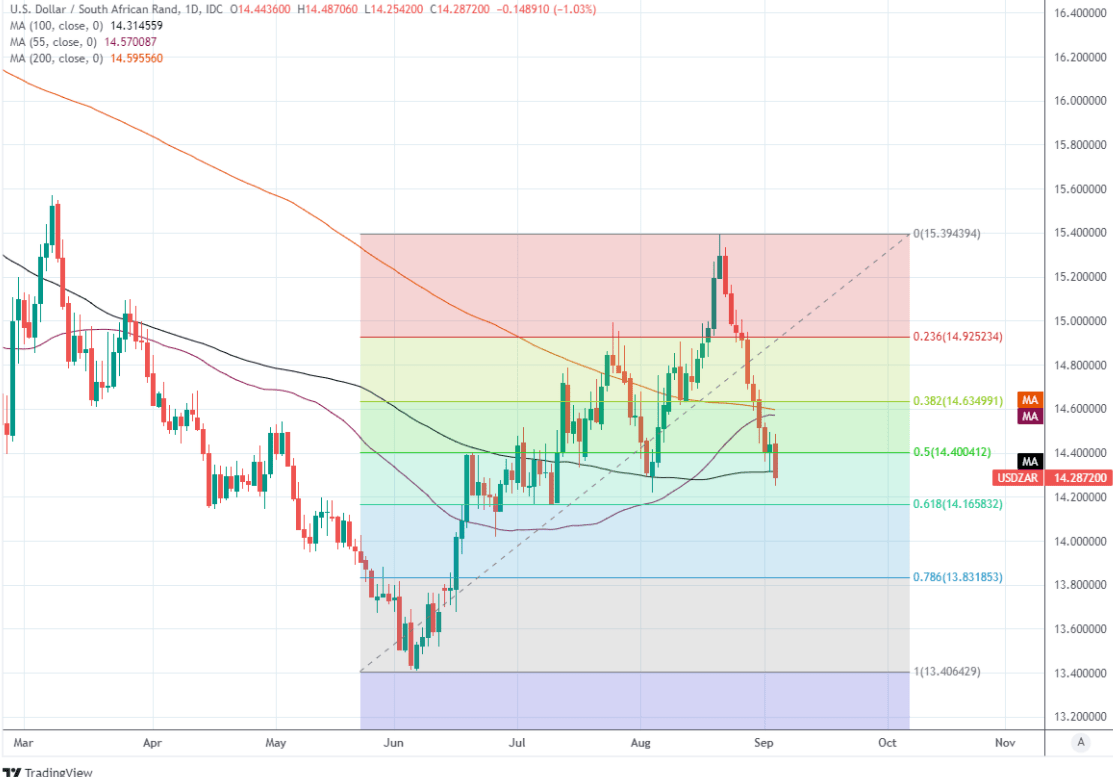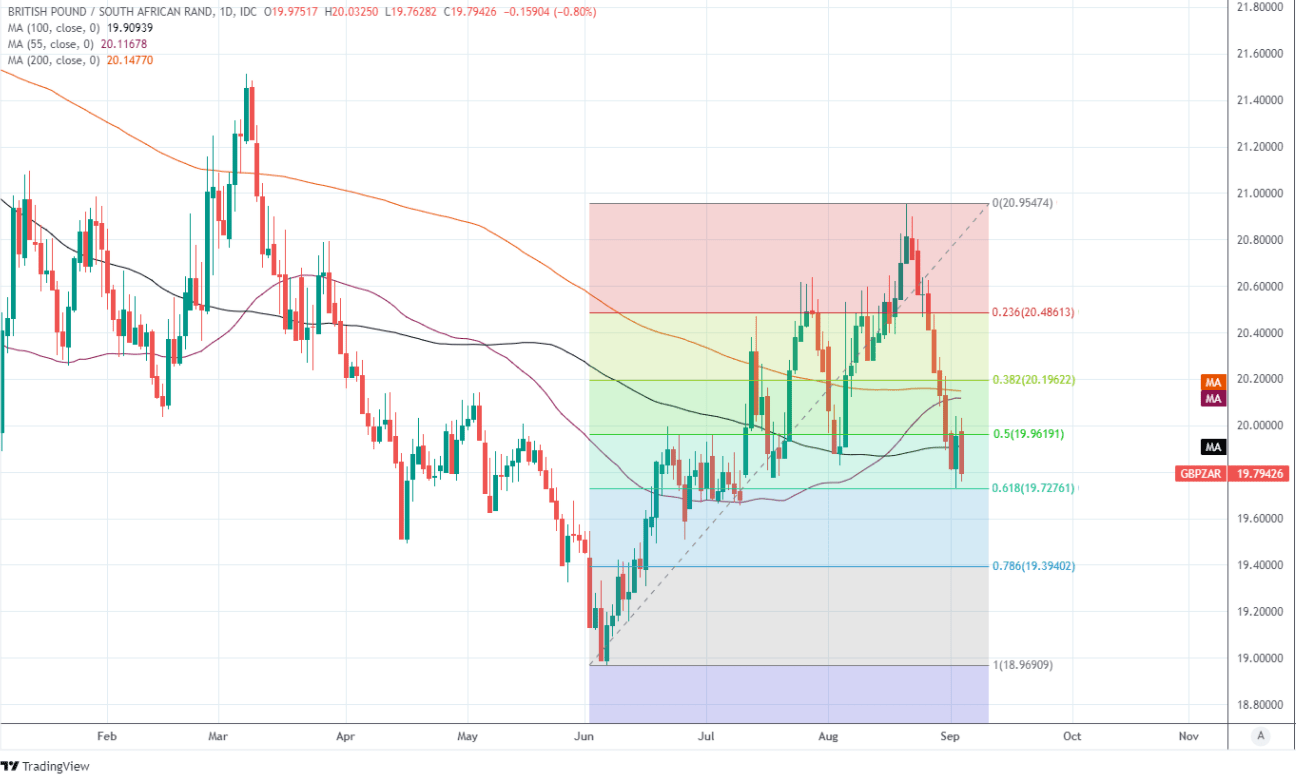South African Rand Breaks Higher as USD/ZAR Tables Turn
- Written by: James Skinner
- USD/ZAR in post-payrolls break lower as USD slides
- Ceding key average after reversing half June’s rally
- USD/ZAR eyes 14.16, keeps pressure on GBP/ZAR

Image © Adobe Images
- GBP/ZAR reference rates at publication:
- Spot: 19.80
- Bank transfer rates (indicative guide): 19.10-19.24
- Transfer specialist rates (indicative): 19.62-19.70
- Get a specialist rate quote, here
- Set up an exchange rate alert, here
The South African Rand broke above a trio of key levels on the charts ahead of the weekend as USD/ZAR declined alongside other Dollar exchange rates, keeping pressure on GBP/ZAR in the process while placing both exchange rates at risk of falling to two-month lows in the weeks ahead.
South Africa’s Rand had recovered more than half of last quarter’s losses against a now-retreating Dollar by Friday when the USD/ZAR exchange rate dive bombed below the 50% Fibonacci retracement of its June-to-August rally at 14.4004 only to then also slip below its 100-day average at 14.3145.
USD/ZAR’s -1.17% decline was the Rand’s ninth gain out of the last 10 trading days and was the sole driver of a -0.97% slide in the Pound-to-Rand exchange rate back to 19.7754, with the bulk of price action coming in the wake of August’s non-farm payrolls report.
“EM FX is starting September with strong broad based appreciation,” says Claudio Piron, a strategist at BofA Global Research in an earlier note. “In particular, ZAR and INR appear to be appreciating more than their historical betas for this year would suggest, an indication of their carry appeal and that underlying positioning could be cleaner, lighter, following the sell-off in July and August.”
Above: USD/ZAR shown at daily intervals with major moving-averages and Fibonacci retracements of June rally indicating possible areas of support and resistance.
The Rand was also trading comfortably above its 200-week moving average in time for the weekend after USD/ZAR fell below 14.63 on Monday, although following Friday’s price action there was little by way of an obvious technical impediment to prevent USD/ZAR from targeting 14.16 next.
“Minor support is seen along the 200- and 55-day moving averages at 14.6255/14.5568. Further down sits the early August low at 14.2237 and the April low at 14.1413,” writes Karen Jones, head of technical analysis for currencies, commodities and bonds at Commerzbank.
Such an outcome would keep pressure on a Pound-to-Rand exchange rate, which fell back beneath 20.0 this week to trade as low as 19.7276, and always closely reflects relative performances in USD/ZAR and GBP/USD.
The latest Rand gains resulted from Dollar pains after the Bureau of Labor Statistics report revealed that an increased number of American workers were adversely impacted by the coronavirus mid-way through the third quarter.
{wbamp-hide start}
{wbamp-hide end}{wbamp-show start}{wbamp-show end}
Some 5.6 million Americans reported being unable to work last month for reasons relating to the pandemic, up from 5.3 million previously and adding insult to injury for the Dollar given that overall non-farm payrolls growth missed market expectations by some distance.
August job growth was 235k and far less than the 720k anticipated by economists even after accounting for an upward revision to July’s number from 943k to 1.05 million.
If it persists over the coming months this lesser rate of job growth could potentially delay or otherwise slow the pace at which the Federal Reserve winds down its quantitative easing programme, and may ultimately lead the market to become more pessimistic about U.S. interest rate prospects.
“Continued improvement in the labour market will strengthen the expectation that asset purchase tapering will begin before the end of the year, but should the labour market undershoot expectations, markets will expect a bit of a delay relative to current expectations,” writes Siobhan Redford, a macroeconomist at Rand Merchant Bank in a note to clients ahead of the release.
Above: GBP/ZAR shown at daily intervals with major moving-averages and Fibonacci retracements of June rally indicating possible areas of support and resistance.







